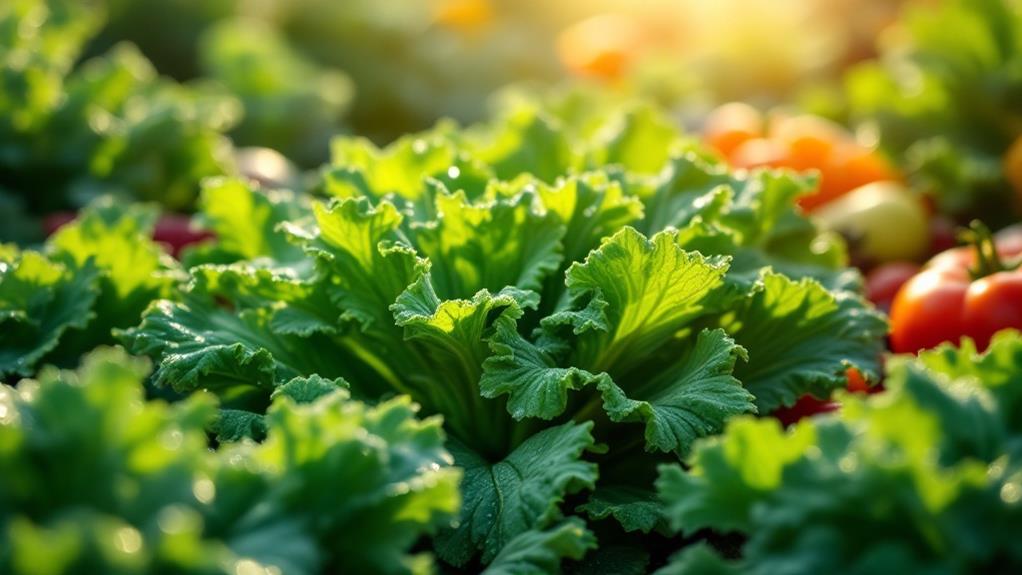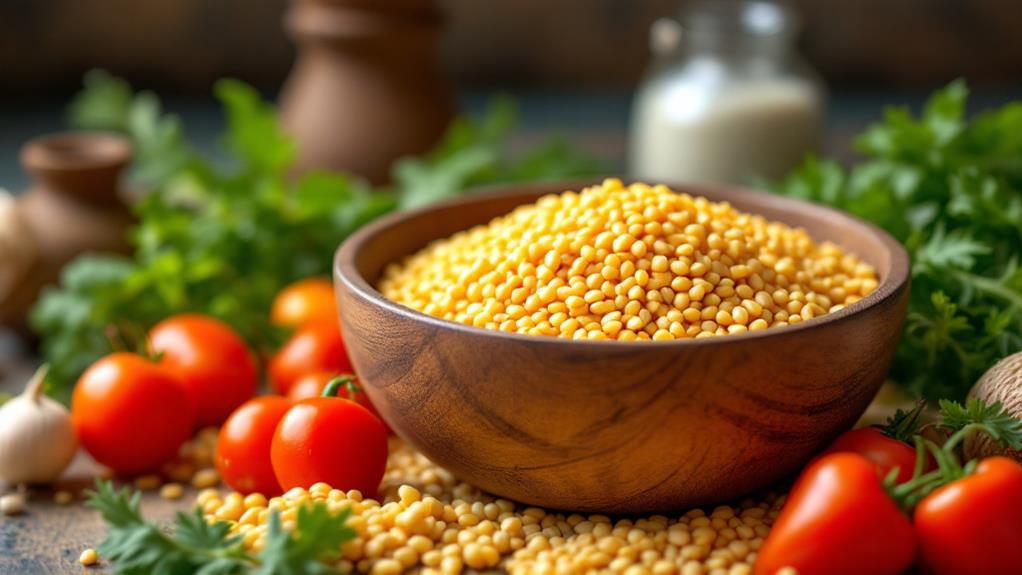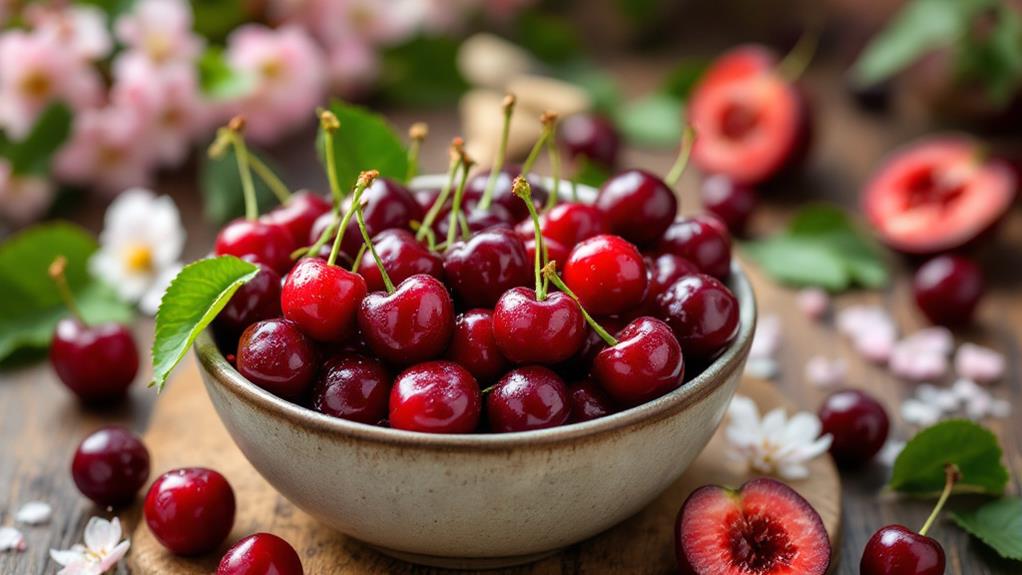Oceanic Fruits: Interesting Facts and Health Benefits

You'll find oceanic fruits fascinating with their rich nutritional profile and unique flavors. Packed with vitamin C and omega-3s, they enhance your immune system and support heart health. Low in calories but high in fiber, these fruits aid digestion and weight management. They're also abundant in iodine, crucial for thyroid function. Try sea grapes or coconut pulp in your meals for a delightful twist. As they grow in coastal environments, these fruits thrive sustainably, enriching local economies. By exploring further, you'll uncover more about their culinary applications and environmental impact.
Nutritional Benefits of Oceanic Fruits
When exploring the nutritional benefits of oceanic fruits, you'll find they're packed with fundamental vitamins and minerals. These unique fruits, such as sea grapes and seaweed, are bursting with vitamin C, which plays a critical role in boosting your immune health. They also offer a rich source of omega-3 fatty acids, known for reducing inflammation and promoting heart health. This makes them a smart choice for anyone looking to improve cardiovascular wellness.
Moreover, oceanic fruits are low in calories yet high in dietary fiber, making them excellent for digestion and weight management. Incorporating them into your diet can help you feel fuller longer, aiding in maintaining a healthy weight. Furthermore, varieties like dulse and nori are abundant in iodine, a mineral necessary for thyroid function and metabolism regulation. This guarantees that your body's metabolic processes run smoothly.
In addition, oceanic fruits contain polysaccharides and other unique compounds with potential anti-cancer properties. These compounds support comprehensive cellular health, providing a protective benefit against certain diseases. By including oceanic fruits in your diet, you can harness these powerful nutrients to support your body's health and wellbeing naturally.
Culinary Uses and Recipes
Exploring the culinary uses of oceanic fruits offers a delightful way to improve your meals with unique flavors and nutritional benefits. Oceanic fruits like sea grapes and sea buckthorn are perfect for adding a burst of flavor to your salads and smoothies. These exotic fruits not only enhance your dishes with their unique taste but also pack a punch of health benefits, making them a smart supplement to your culinary repertoire.
Consider using the pulp of coconuts in your desserts and curries. The natural creaminess and subtle sweetness of coconut can transform any dish, making it a favorite among tropical ingredients. Try blending mangosteen and lychee into your beverages for a revitalizing, exotic twist on traditional cocktails. Their lively flavors will surely impress your guests.
For a colorful and nutritious dish, create a revitalizing fruit salad with a mix of oceanic fruits and tropical ingredients. The lively colors and diverse textures will make your salads stand out, while also providing a healthy uplift. Integrating these oceanic fruits into your recipes not only raises your meals but also guarantees you're reaping the health benefits they offer. Immerse yourself in the world of oceanic fruits and let your culinary creativity flow!
Growth and Cultivation
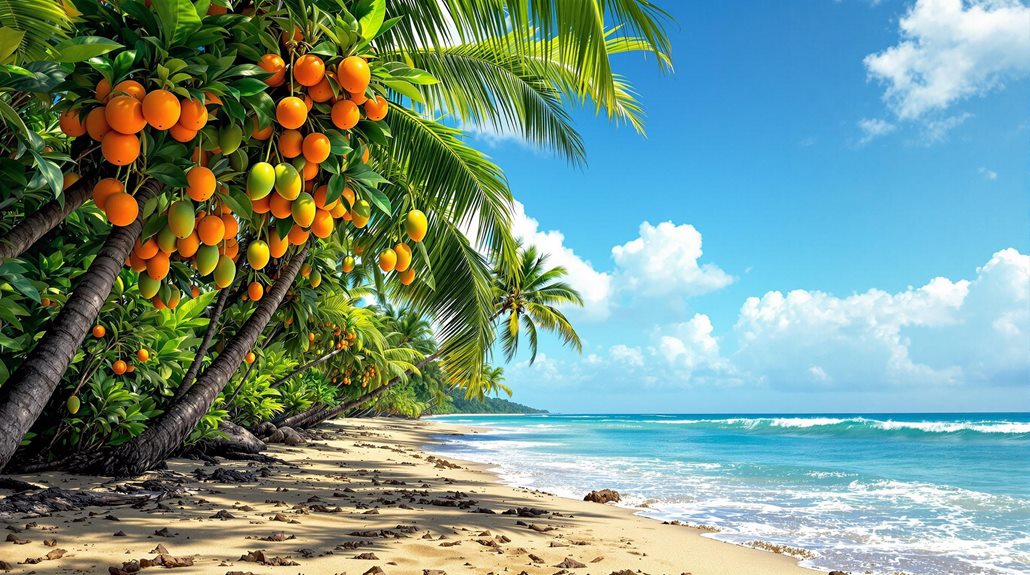
The growth and cultivation of oceanic fruits are fascinating processes that thrive in coastal environments. Oceanic fruits like sea grapes and seaweed depend on saline water to flourish, adapting beautifully to their unique marine habitats. The coconut tree, another remarkable oceanic fruit producer, can reach impressive heights of up to 98 feet. It takes about 11-12 months for coconuts to mature, with the tree being classified scientifically as a drupe.
Cultivating these fruits often involves sustainable practices. One such practice is integrated multi-trophic aquaculture, which allows different species to grow together, enriching the ecosystem. This method improves the growth conditions by utilizing the waste of one species as nutrients for another, creating a harmonious, self-sustaining environment. Seaweed, a type of marine algae, thrives in nutrient-rich environments and can be cultivated through both wild harvesting and aquaculture. It requires specific water temperatures to grow efficiently.
Some oceanic fruits are incredibly resilient, capable of withstanding harsh weather conditions. For instance, certain sea grape varieties can survive strong currents and tidal changes, ensuring their propagation in dynamic coastal ecosystems. By understanding these processes, you can appreciate the complexity and beauty of oceanic fruit cultivation.
Market and Economic Impact
Driven by a surge in consumer interest for unique flavors and health benefits, the market for exotic fruits, including oceanic varieties, is rapidly expanding. You might notice that oceanic fruits like sea grapes and seaweed are popping up in health food markets everywhere. This rising popularity is largely due to their impressive health benefits and their ability to satisfy a growing consumer demand for new culinary experiences. These fruits aren't just a trend—they're shaping market growth with projected rates of around 7% annually.
Oceanic fruits play an essential role in enhancing local economies, especially in coastal areas where they're harvested. Sustainable harvesting practices guarantee that these fruits not only support economic activities but also protect marine biodiversity. This approach helps maintain the delicate balance of marine ecosystems while providing economic stability to communities.
The export of oceanic fruits from regions like the Caribbean and Pacific Islands strengthens trade relationships. As these fruits become key export products, they command premium prices, improving regional incomes. The seasonal and regional availability of these exotic fruits can cause price fluctuations, but their health benefits and unique flavors make them a sought-after commodity in international markets.
Sustainable Practices and Recommendations
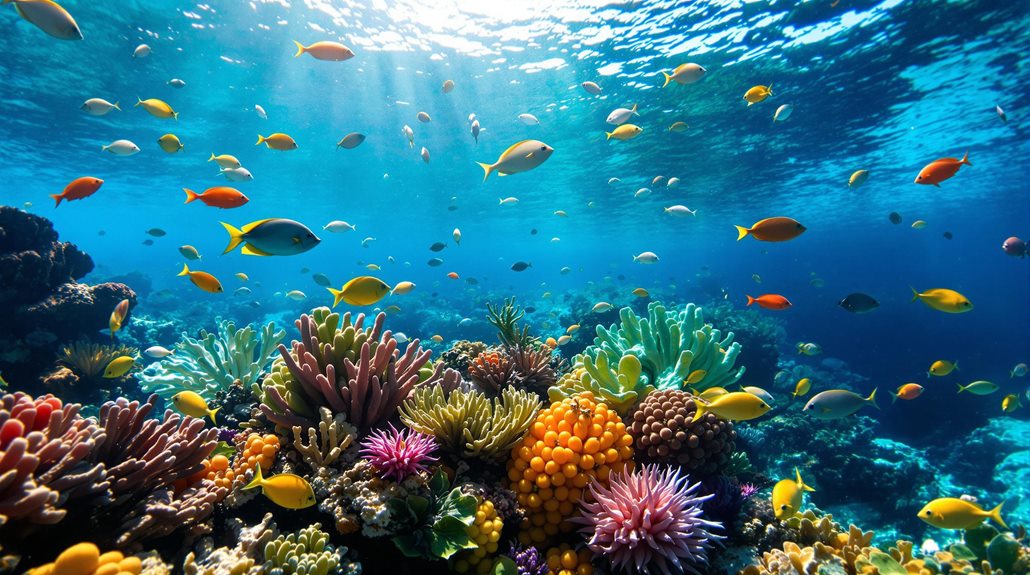
As oceanic fruits continue to shape markets and bolster local economies, it's vital to contemplate the sustainable practices that guarantee their long-term viability. Embracing organic certifications for sea grapes and algae assures you're choosing chemical-free produce, which supports biodiversity in coastal ecosystems. By opting for these certified products, you contribute to preserving marine life and promoting healthier environments.
Harnessing renewable energy in the form of solar-powered facilities for harvesting and processing oceanic fruits reduces carbon footprints considerably. This not only supports environmental goals but also aligns with sustainable practices by cutting down reliance on fossil fuels. Additionally, local cultivation of these fruits minimizes transportation emissions and strengthens community resilience. By buying locally, you support fresh, nutritious options in your area, benefiting local farmers and markets.
Resource efficiency is another vital element. Using byproducts like seaweed in food and cosmetic industries aids in waste reduction and optimizes the potential of each harvest. Incorporating oceanic fruits into your diet aligns with dietary recommendations that promote wellness and sustainable consumption patterns. By doing so, you're not only enhancing your health but also supporting a more sustainable food system that benefits both the planet and future generations.

